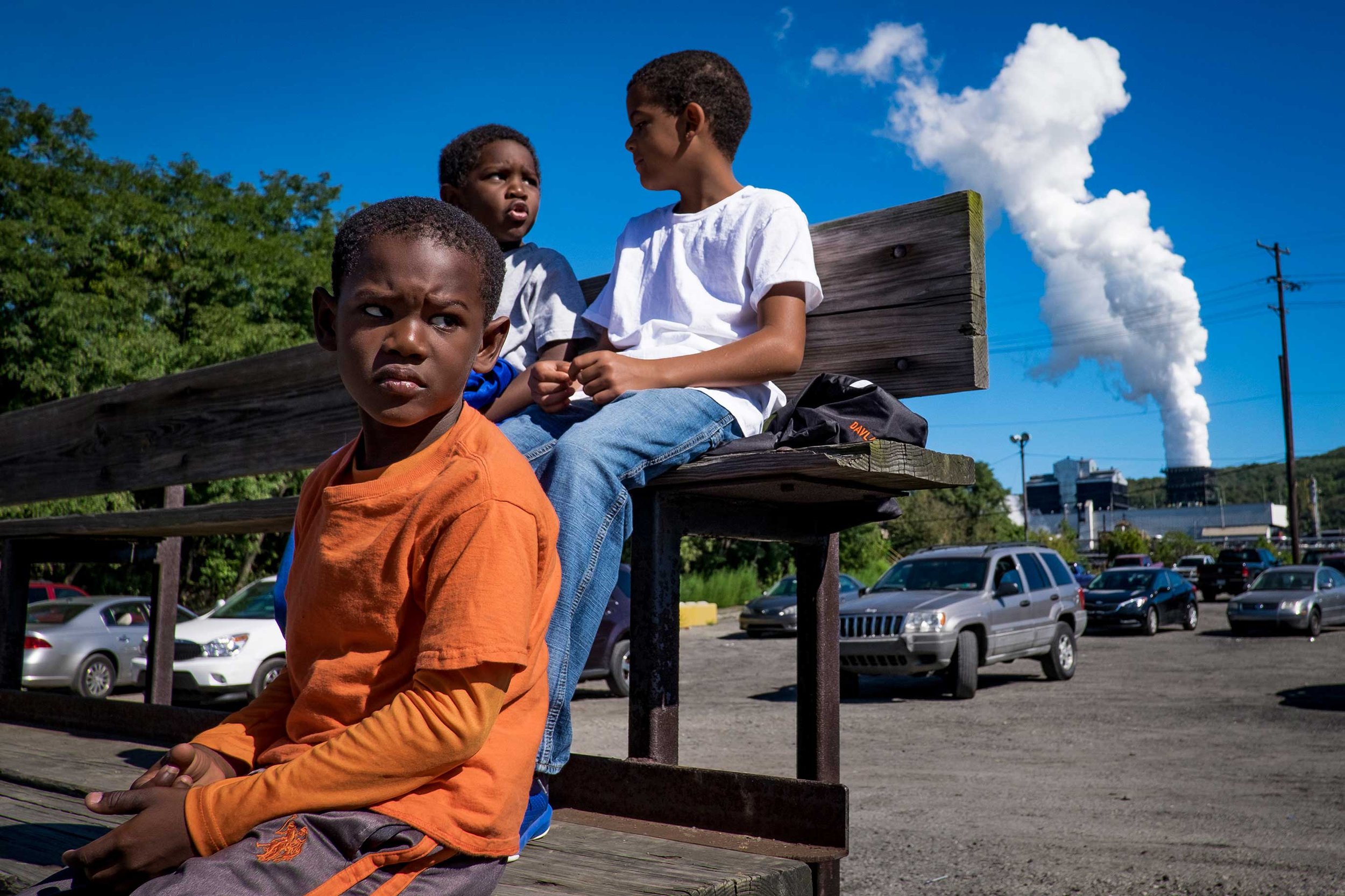Left Behind in the
Monongahela River Valley
In his painting The Monongahela River Valley, Pennsylvania, the Scottish-born, self-taught John Kane offers an ode to the ever-growing industrialization in his adopted hometown of Pittsburgh. Painted in 1931, and now part of the collection at The Met, the landscape that Kane captured borders on pastoral. In the foreground, white fog tumbles from smokestacks set against perfect blue skies, while copper-hued factories rise from the banks on either side of the river as if extensions of the soil itself. Above, cotton-white clouds hang in the valley like decorative adornments, and lush green hills dotted with small houses and trees vanish into the endless horizon. Still, something is amiss.
In Kane’s painting the scene is picturesque, perhaps too much so. It offers an idealized rendering of industry’s invasive footprint on the land, where there is somehow harmony between man-made blast furnaces and the natural world. Where red-hot crucibles cast iron into steel, and where progress is defined by what can be harvested from the environment and sold. Some might even call Kane’s painting propagandist. There are no plumes of black smoke blotting out the sun, a scene captured time and again on Pittsburgh streets throughout the first half of the 20th century. And the waters of the Monongahela River shimmer blue in the daylight, no signs of soot or carbon darkening its depths or shores.t all begins with an idea. Maybe you want to launch a business. Maybe you want to turn a hobby into something more. Or maybe you have a creative project to share with the world. Whatever it is, the way you tell your story online can make all the difference.
To be fair, the Pittsburgh that Kane inhabited was far different than what the city has become. As a lifelong laborer who wasn’t discovered as an artist until he was 67, he painted the Monongahela River Valley at a time when it was producing half of the nation’s steel.1 It was the Silicon Valley of the industrial age. The steel shipped out of Pittsburgh was used to build skyscrapers, automobiles, and to strengthen America’s war machine. As far as Kane knew, there was no end in sight. But that’s only because he didn’t live long enough to witness the collapse.
Today, nearly 100 years since Kane painted the Monongahela River Valley as a place of American ingenuity and promise, the landscape is littered with the skeletal remains of an industry that once seemed unstoppable. Perhaps it’s fitting that the valley and river derive their names from the Lenape word Mënaonkihëla, which means “where banks cave in or erode.”2 That natural erosion of soil and rock has been mirrored in the economic collapse of industries throughout the valley. In towns from Monessen and Rankin to Braddock, Duquesne, and Clairton, residents are in the midst of a decades-long postindustrial depression that shows no signs of letting up. These towns are outliers that reaped little benefit from Pittsburgh’s transformation to a hub of medical research and higher education in the 1980s and 1990s. And they exist at a remove from the city’s current economic renaissance, where neighborhoods like Lawrenceville and East Liberty are being remade into increasingly affluent hipster enclaves as tech giants like Amazon, Google, Uber, and Intel have set up headquarters in the city.3
